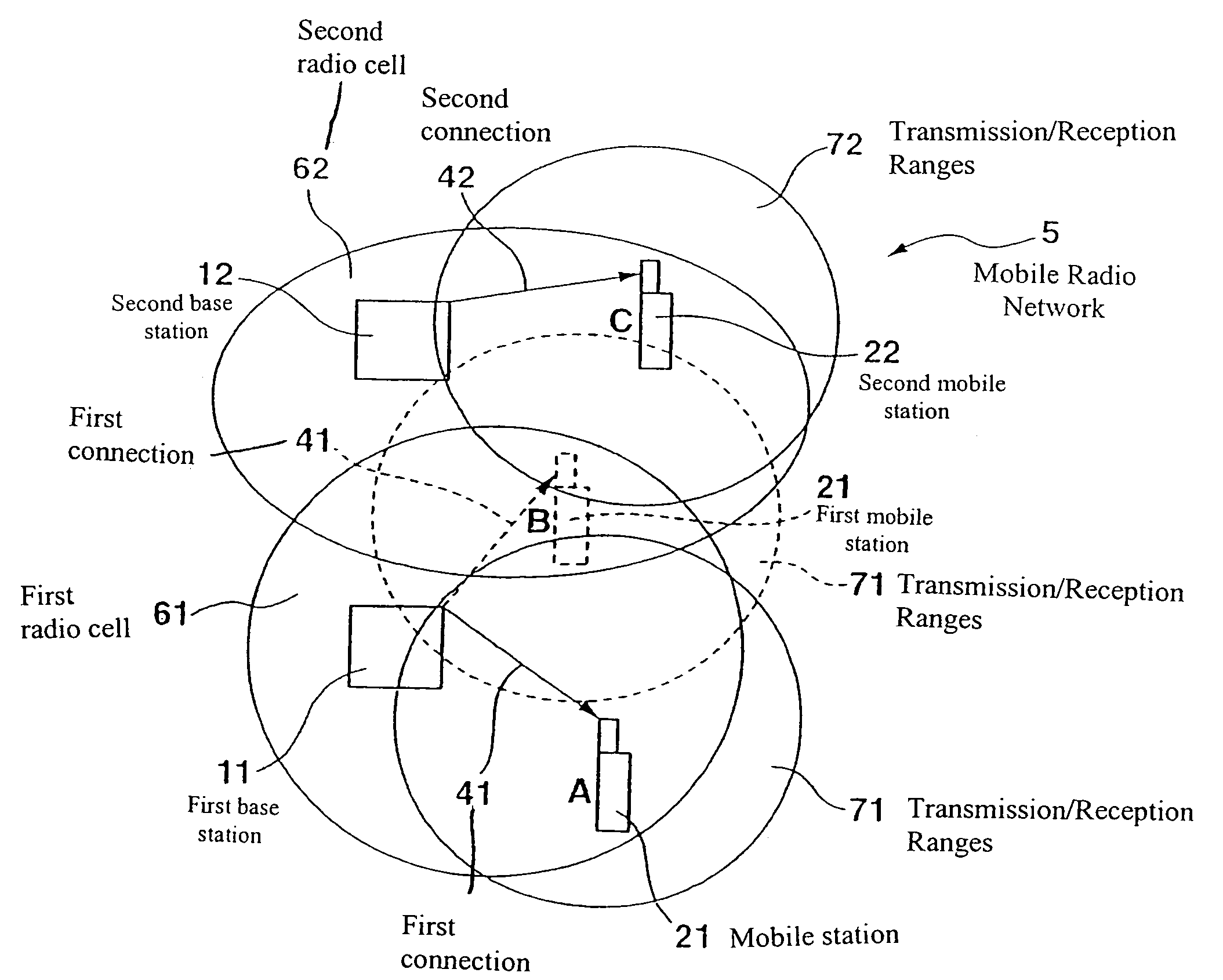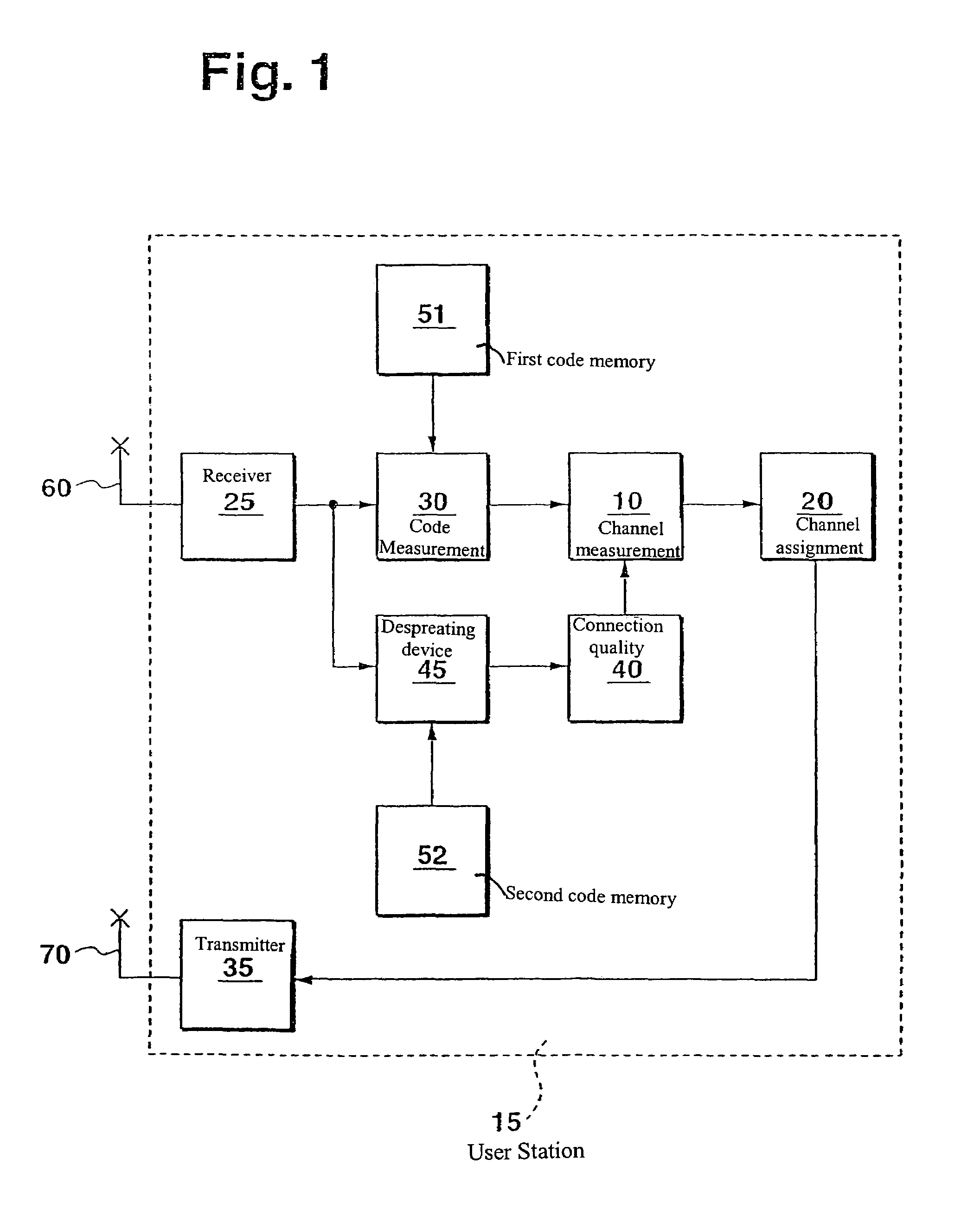Method of assigning transmission channels in a telecommunications network and user station
a transmission channel and user station technology, applied in the field of assigning transmission channels in a telecommunications network and to a user station, can solve the problem of inability to coordinate code assignment, and achieve the effect of increasing the number of simultaneous connections, ensuring the highest possible connection quality, and increasing the capacity of the telecommunications network
- Summary
- Abstract
- Description
- Claims
- Application Information
AI Technical Summary
Benefits of technology
Problems solved by technology
Method used
Image
Examples
Embodiment Construction
[0017]In FIG. 1, 15 identifies a user station of a telecommunications network 5. Telecommunications network 5 may be implemented, for example, as a landline network or as a mobile radio network. If telecommunications network 5 is a mobile radio network, user station 15 may include a base station 11, 12 or a mobile station 21, 22, as shown, for example, in FIG. 3. For the description to follow, it is presumed, for exemplary purposes only, that telecommunications network 5 is a mobile radio network and that user station 15 is a base station 11, 12 or a mobile station 21, 22. Mobile radio system 5 and user station 15 may be implemented, for example, according to the GSM standard (Global System for Mobile Communication), the UMTS standard (Universal Mobile Telecommunication System) or the like.
[0018]User station 15 illustrated in FIG. 1 includes a receiver 25, to which a receiving aerial 60 is connected. As shown in FIG. 1, user station 15 also includes a transmitter 35, to which a tran...
PUM
 Login to View More
Login to View More Abstract
Description
Claims
Application Information
 Login to View More
Login to View More - R&D
- Intellectual Property
- Life Sciences
- Materials
- Tech Scout
- Unparalleled Data Quality
- Higher Quality Content
- 60% Fewer Hallucinations
Browse by: Latest US Patents, China's latest patents, Technical Efficacy Thesaurus, Application Domain, Technology Topic, Popular Technical Reports.
© 2025 PatSnap. All rights reserved.Legal|Privacy policy|Modern Slavery Act Transparency Statement|Sitemap|About US| Contact US: help@patsnap.com



